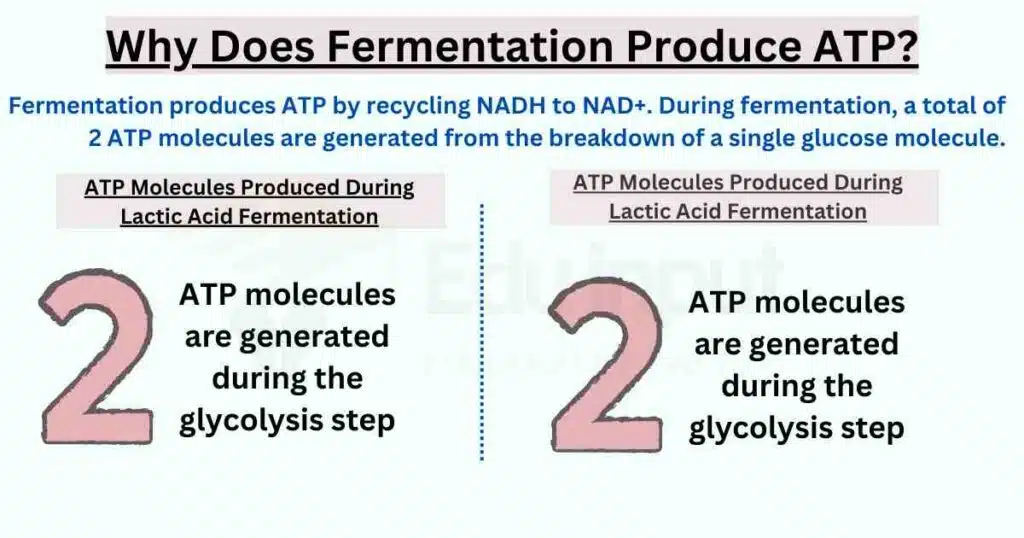Why Does Fermentation Produce ATP?
Fermentation produces ATP by recycling NADH to NAD+. Without fermentation, NADH would accumulate that can stop glycolysis, and no ATP would be produced. That’s why fermentation allows continuous breakdown of glucose to generate ATP in the absence of oxygen.
Fermentation allows the recycling of NADH to NAD+, which enables glycolysis to continue, resulting in the continuous production of ATP.

How Many ATP Are Formed In Fermentation?
During fermentation, a total of 2 ATP molecules are generated from the breakdown of a single glucose molecule.
Let’s say you have 4 molecules of glucose that undergo fermentation. Based on the information that a single glucose molecule produces 2 ATP, we can calculate the total ATP produced as follows:
- 1 molecule of glucose produces 2 ATP
- 4 molecules of glucose produce 4 x 2 ATP = 8 ATP
So, the total ATP produced from the fermentation of 4 molecules of glucose is 8 ATP.
How Many ATP Molecules Are Formed During Lactic Acid Fermentation?
The total number of ATP molecules produced during lactic acid fermentation is only 2, which is generated during the glycolysis step.
Lactic acid fermentation is a process that breaks down glucose to produce energy in the form of ATP. During this process, glucose is first converted into two pyruvate molecules through a process called glycolysis. This step produces a total of 2 ATP molecules.
The second step of lactic acid fermentation involves the regeneration of NADH, a molecule that helps in the breakdown of glucose. Although NADH is produced during glycolysis, it needs to be regenerated back to its original form called NAD+. This step does not produce any ATP.
How Many ATP Molecules Are Formed During Alcoholic Fermentation?
During alcoholic fermentation, the process produces a total of 2 ATP molecules.
This is because the initial step of the fermentation process, which is glycolysis, generates 2 ATP molecules. The breakdown of pyruvate produces acetaldehyde, carbon dioxide, and ethanol, but no additional ATP molecules are produced. Therefore, only 2 ATP molecules are generated throughout the entire process of alcoholic fermentation.



Leave a Reply